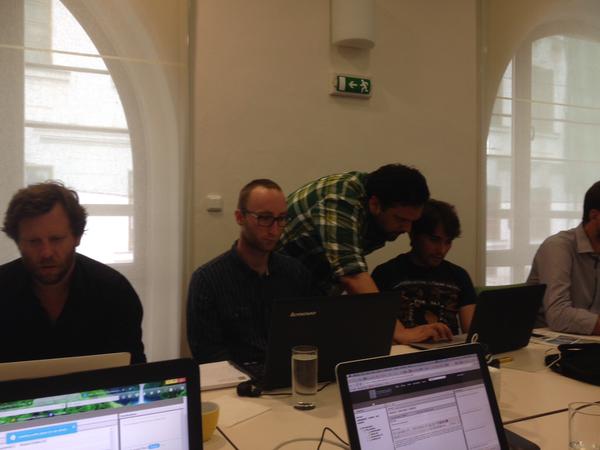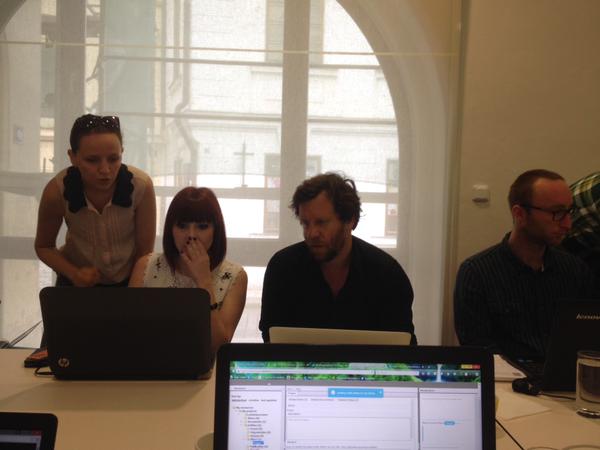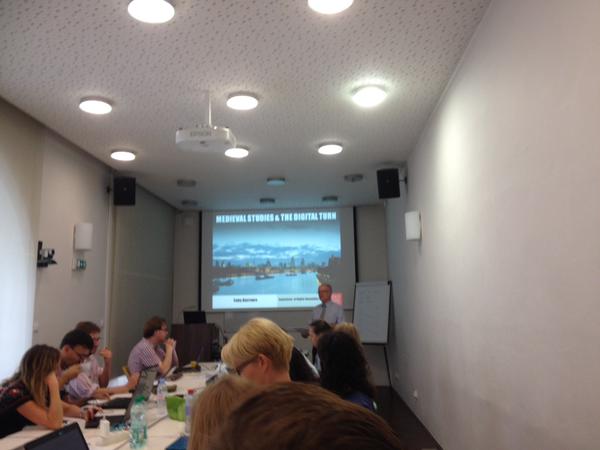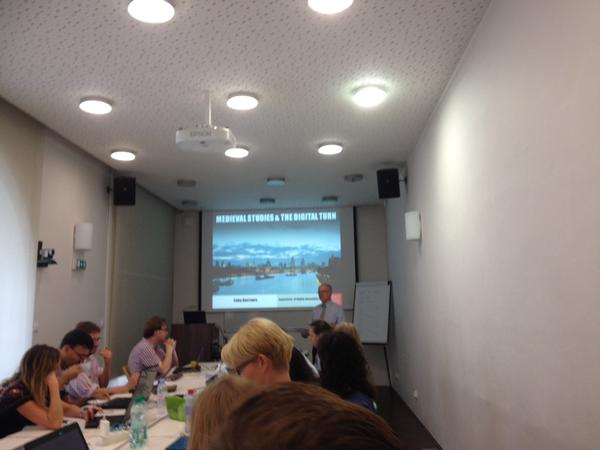The fourth day of the CENDARI summer school started with a practical session led by Libor Svanda using the Classical Text Editor.
Libor Švanda taking #CendariSummer15 through the basics of the Classical Text Editor. pic.twitter.com/a2ePA9eXsq
— Patricia O Connor (@trishaoconnor88) July 23, 2015
The Classical Text Editor was one of the main tools that I was looking forward to learning how to use at CENDARI as I hoping to producing a critical edition of the marginalia from the manuscript witnesses of the Old English Bede. The Classical Text Editor is an ideal apparatus to employ in my own research because it is specifically designed for scholars who are engaged with creating critical editions. Furthermore the Graphic Viewer feature of the Classical Text Editor allows researchers to view the manuscripts. This feature will help ensure that my critical edition remains grounded in its codicological focus. The fact that the Classical Text Editor enables me to position text in the header, footer, inner and outer margin sections is the greatest attraction to me, precisely because the marginalia of the Old English Bede and is a crucial aspect of my research. One manuscript witness in particular, Cambridge, Corpus Christi College 41 has an extensive amount of marginal texts which frequently occupy the top, bottom and outer margins of the manuscript. The Classical Text Editor is the first easy to use software that I have encountered to date that has the flexibility to replicate the complexity of the Old English Bede‘s textual relationships. I look forward to becoming more familiar with the Classical Text Editor as I incorporate it into my research.


The afternoon session saw us resuming our exploration of the CENDARI Virtual Research Environment with Nadia Boukhelifa and Emmanouil Giannisakis. As we experimented further with the basic functions of the CENDARI Note Taking Environment, Nadia and Emmanouil explained that the primary objective of the resource was to facilitate investigation by creating an environment within which scholars can browse, search, and most importantly visualise and analyse their research. The advantages of visualising your research was emphasised in this session as the visual system of the CENDARI Note Taking Environment is designed to immediately convey the inherent patterns and correlations in the user’s data. The tagging feature of the Note Taking Environment also gives the scholar the ability to generate thousands of entities. The frequency-based visualisation system of the Note Taking Environment tracks the frequency with which entities occur and implies a certain hermeneutics in its visualisation of this data.

The penultimate day of the CENDARI summer school concluded with guest speaker Dr Toby Burrows’ presentation “Medieval Studies and the Digital Turn”. Dr Burrows discussed the advantages and limitations of digitisation in relation to medieval studies. The main purpose and implied advantage of digitisation is the ability to bring together disparate sources in a more convenient way for research. In his presentation Dr Burrows argued against the idea of building individual and separate institutional digital collections and advocated instead for interoperability. Interoperability relies on individual institutions standardising their digital procedures, that is to say that libraries will need to conform to publishing their digital images in a certain way. The advantage of standardising the publication of these institutional images is that instead of having to move between different institutional websites, a researcher can bring the desired images together on one screen.
The limitation of digitisation extends beyond the image; Dr Burrows identified what is yet lacking in medieval studies and hinders the discipline from optimising its full potential in the digital age. Currently there are no identifiers for medieval manuscripts, medieval people or places. This makes it more difficult to situate medieval studies within a linked open data framework. Addressing this lack will reinvigorate medieval studies by allowing individual researchers to create the relationships between different manuscripts as well as linking manuscripts to the texts within them. More importantly adopting a linked open data approach to medieval studies will foster research on an unprecedented scale through linking scholarly activities to the manuscripts and objects they reference. It was clear from Dr Burrow’s presentation that medieval studies and the humanities in general have a lot to gain from staying attuned to emerging developments in the digital domain.
![]() This work is licensed under a Creative Commons Attribution-NonCommercial-ShareAlike 4.0 International License.
This work is licensed under a Creative Commons Attribution-NonCommercial-ShareAlike 4.0 International License.

No Comments